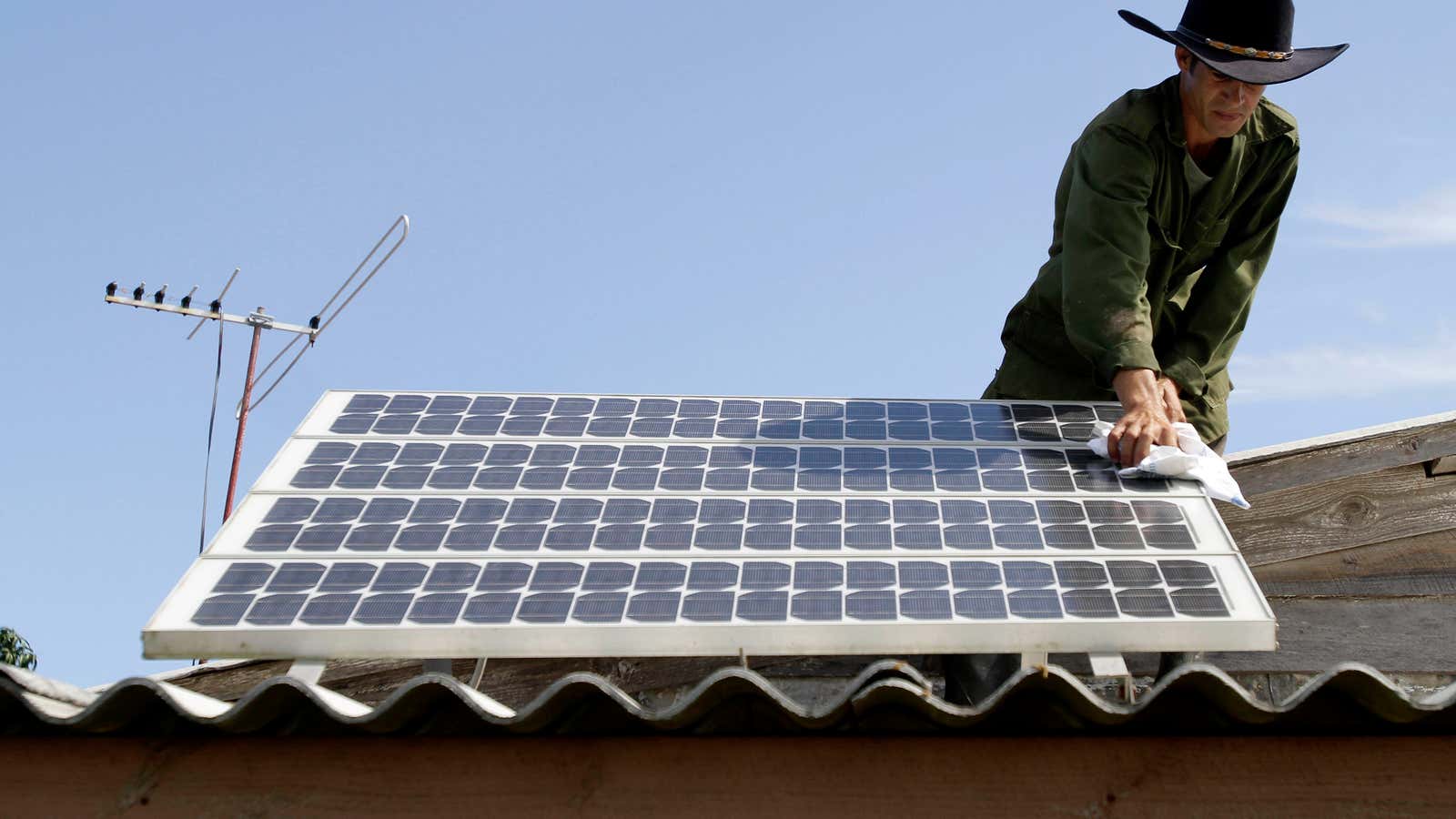In January, the Edison Electric Institute (EEI), the trade group of US investor-owned utilities, released a singularly amazing report that the press missed at the time, says David Roberts at Grist. The report is a blueprint for the financial collapse of the North American utility industry—and all of it at the hands of solar panels.
The summary: When people and communities start producing their own power via solar panels, four things happen:
1. Electricity utility companies sell less electricity. Right now solar panels provide less than 1% of the power used by the US grid. But Bloomberg New Energy Finance projects that by 2020, in some parts of the US, they could provide 10%.
2. As a result, rates for electricity will go up—a lot. Utility companies’ long-term investments in fossil-fuel power plants—with payoffs that can span 30 years—must be repaid. So if people are using less power, the cost of those power plants must be spread across fewer customers. The EEI estimates this trend could increase rates for electricity by 20% or more. Using Bloomberg’s timetable for the growth of solar power in the US, that could happen as soon as 2020.
3. What’s worse, solar panels supplant the most profitable kind of power that utilities sell. In the middle of the day in the summer, when the sun is shining and air conditioners are churning away, electricity companies sell power at peak prices. These are also the times that solar panels are most effective, lopping off the mid-day “peak” where utilities usually make most of their money.
4. Worse still, utilities will have to pay higher rates to finance new power plants and infrastructure. Once banks, other financial institutions and bond holders realize what’s happening, they might cease to see utility companies as a safe investment worthy of low interest rates. So the utilities have to hike their prices even higher to compensate.
All this will encourage yet more homeowners, businesses and communities to buy solar panels as power from the grid gets more expensive. You can see where this is going: The EEI says it could become a feedback loop that eventually wrecks the whole US utility industry, or at least greatly diminishes it.
Eventually, people will only be using the grid as a backup, combining ever-cheaper solar panels with ever more affordable batteries to store the power for when the sun isn’t shining. That’s called an energy transition.
Roberts sums it up like this:
The report compares utilities’ possible future to the experience of the airlines during deregulation or to the big monopoly phone companies when faced with upstart cellular technologies. In case the point wasn’t made, the report also analogizes utilities to the US Postal Service, Kodak, and RIM, the maker of BlackBerry devices. These are not meant to be flattering comparisons.
It’s important to note that this report is, as you might expect from an industry group, entirely self-serving. EEI wants regulators to step in and help protect them from the threat of distributed solar power. So it’s in their interest to hype the threat. On the other hand, even if they’re exaggerating how fast the change will come—after all, cheaper natural gas could keep them competitive for a while yet—the report is an important outline of the future.
Have investors in utilities responded to this threat yet? No, says EEI, which goes on to compare it (pdf, p.8) to past disasters like the 1973 Arab oil embargo, the abandonment of nuclear power plants in the 1980s, and the post-Enron bankruptcy and collapse of an entire industry of “merchant” power plants that sell electricity to the highest bidder. Eventually, investors will get wise to the disruptive power of solar panels, the report implies, but possibly not until they have guaranteed the up-ending of the entire industry of electricity delivery.
